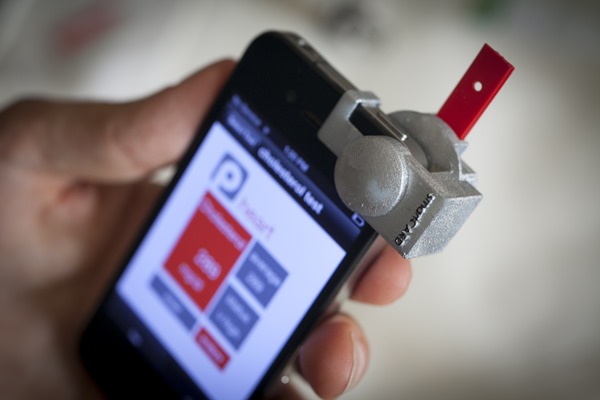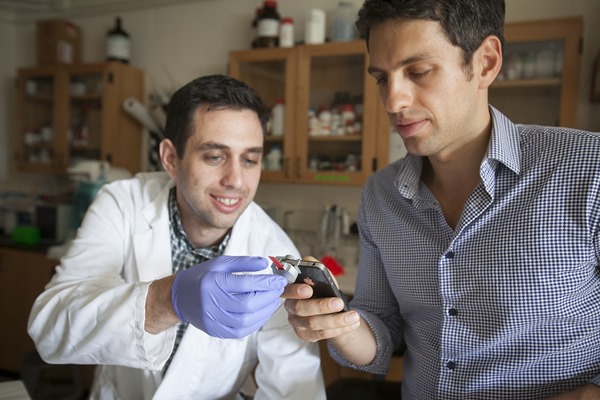We’re fast getting used to having our smartphones control all facets of our lives, and our health is just one example of where a smartphone app can help not only keep us exercising but also to monitor its short and long-term affects on our bodies. There are plenty of apps that will monitor our calorific intakes as well as the amount of exercise we’re getting, and there are even apps that can take your blood pressure just by using a phone’s built-in camera. It’s magic, and super awesome.
There’s one health check that has so far eluded those app developers that are trying to make sure we stay healthy, and now it seems even that corner of health monitoring is going to become all smartphone-ified thanks to research coming out of Cornell University.

Writing in a paper published in the journal Lab on a Chip, the researchers have shared the news that they have found a way for smartphone owners to monitor their own cholesterol levels with utter ease. They’ll need to be comfortable drawing their own blood, or have someone who can draw it for them, depending on the situation, but the only other requirements are a new accessory and a reagent test strip.
Once the blood is on the test strip, it’s placed into an accessory that fits over the smartphone’s camera and flash. The accompanying app then uses the phone’s built-in apparatus to illuminate and capture the color of the strip, removing the need to visit a health care professional altogether for the very same purpose. The researchers are also working on a version that will be able to test vitamin-D levels, too, which is great news for those who love to keep their health levels in check.

The technology itself isn’t all that special on its own, but combined with the special app the package joins a growing list of apps and accessories that are turning our humble smartphones into handheld medical centers. For fans of Star Trek, we’re getting closer and closer to the medical bays we grew up watching on our TVs.
The future is drawing closer and closer, and it’s increasingly looking like the smartphone will be at the center of it. Maybe that’s why companies are clambering over themselves the smartphone market, then.
You can follow us on Twitter, add us to your circle on Google+ or like our Facebook page to keep yourself updated on all the latest from Microsoft, Google, Apple and the Web.

